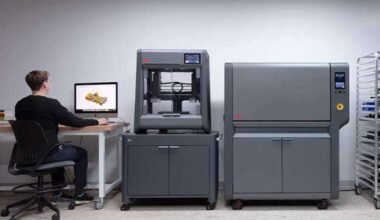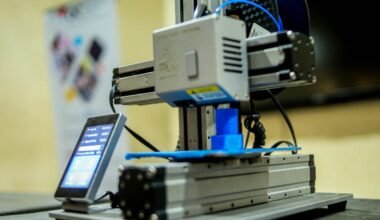The most available type of 3D printer you can find is the FDM type that uses a filament. FDM (Fixed Deposition Modelling) also known as FFM (Fixed Filament Modelling) printers are the most popular and affordable desktop 3D printers.
choosing the right filament is usually the biggest challenges for beginners, filaments come in different color and they are made of different materials. This post will help you to choose the right filament for your print, but first, what is a filament?
What is a 3D Printer Filament?
A 3D printing filament is a thermoplastic material that is used in 3D printing by printers that use Fused Deposition Modeling. They are in the form of a thread, usually 1.7mm or 2.85mm thick, wound around a spool. These filaments are usually made of plastic, nylon, carbon fiber, etc.
1. PLA Filament
PLA (Polylactic Acid) is the most popular type of 3D printer filament. it is very easy to use. It is the best for beginners, and it is also a favourite filament for experts. PLA is food safe and it does not warp easily during printing. PLA has better dimensional accuracy than ABS. PLA melts and prints at 180°C to 230°C. It is has low heat resistance and models made with PLA should not be used in a hot environment.
If you are just starting out, I would recommend you buy a PLA filament.
2. ABS
ABS is a plastic type widely used in engineering and manufacturing. It is tough and durable. ABS requires high temperatures for both the hot-end and the printer bed. Models made with ABS can also withstand high temperature. ABS is used in the plastic industry for manufacturing everyday items but, it tends to warp during printing, which results in poor dimensional accuracy. It is not as easy to use as PLA but it is stronger than PLA but not as easy to use.
ABS is short for Acrylonitrile butadiene styrene.
3. PETG
Polyethylene terephthalate glycol-modified (PETG) is a modified variant of PET. The adding glycol to the variant, it lowers the melting temperature sufficiently for PETG to be more useful in 3D printing. Aside from being easy to print, PETG is also UV-resistant. It has poor adhesion and it has a tendency to create strings when the printhead crosses empty space between features. PETG has high density and its has high temperature resistance.
4. Nylon
Nylon, also known as Polyamide (PA), is a family of synthetic polymers used in many industrial applications. Nylon is very popular and is the preferred material in powder-fusion 3D printing. As a filament for 3D printing, it is very strong, very flexible and durable.
5. Carbon Fiber
Carbon fiber filaments use tiny fibers that are infused into a base material to improve the properties of that material. Some filament materials that are fused with carbon fiber include PLA, PETG, Nylon, ABS, and Polycarbonate. These fibers are extremely strong and cause the filament to increase in strength and stiffness.
Carbon fiber filaments are ideal for applications that require superior stiffness, ease of printing, improved dimensional stability, UV-resistance, and lighter weight parts vs. standard structural materials. Exceptional stiffness and dimensional stability.
Printing with carbon fiber requires hardened steel nozzle.
6. TPE/TPU/TP
TPE (Thermoplastic Elastomer/Polyurethane/Copolyester) comprises a number of plastics with rubber-like qualities, making them extremely flexible and durable. As such, TPE is commonly used to produce automotive parts, household appliances, and medical supplies. TPE incorporates a broad category of filaments, including urethane-based TPU, which is slightly more rigid to improve printability
I would recommend TPE filaments for works that will be used under tension and stress.
So, Which One Should You Choose?
It all depends on what you want to achieve, if you are a beginner in 3d printing, i would suggest that you use PLA. If you are going to make something that will be used more often, I will recommend PETG. If you are printing a model that needs to be very strong but also has to be light weight, I recommend a carbon fiber filament.






